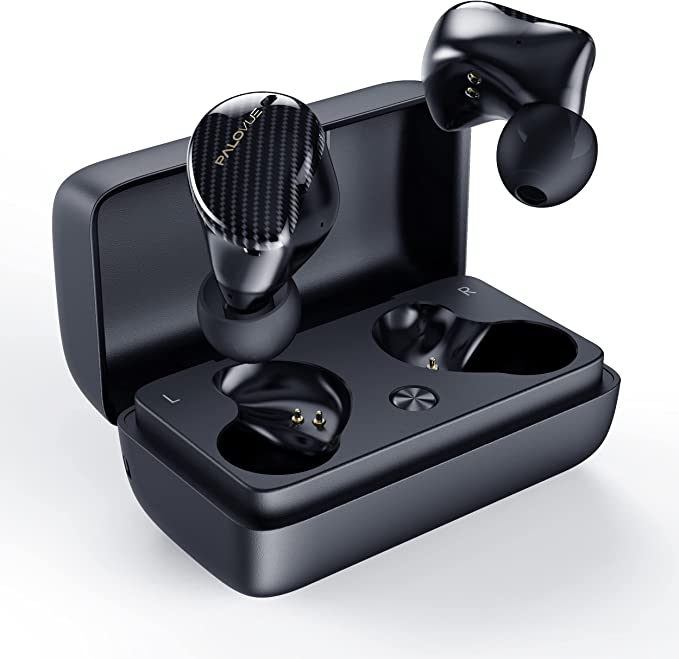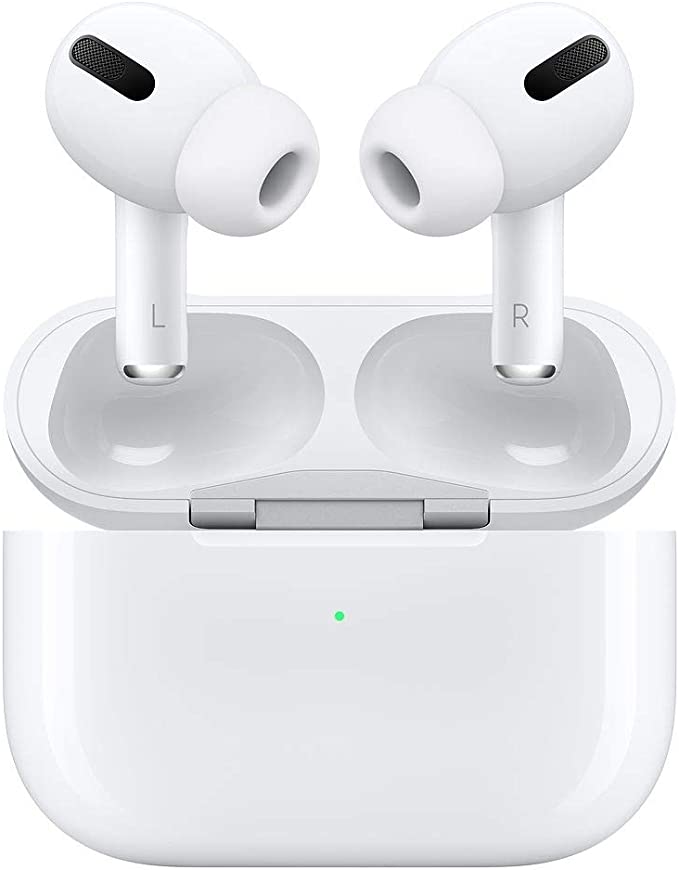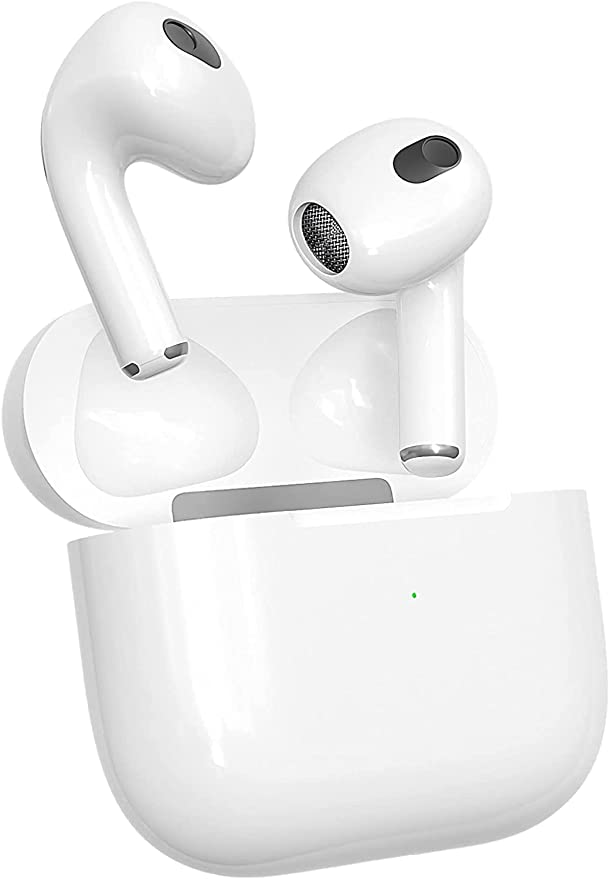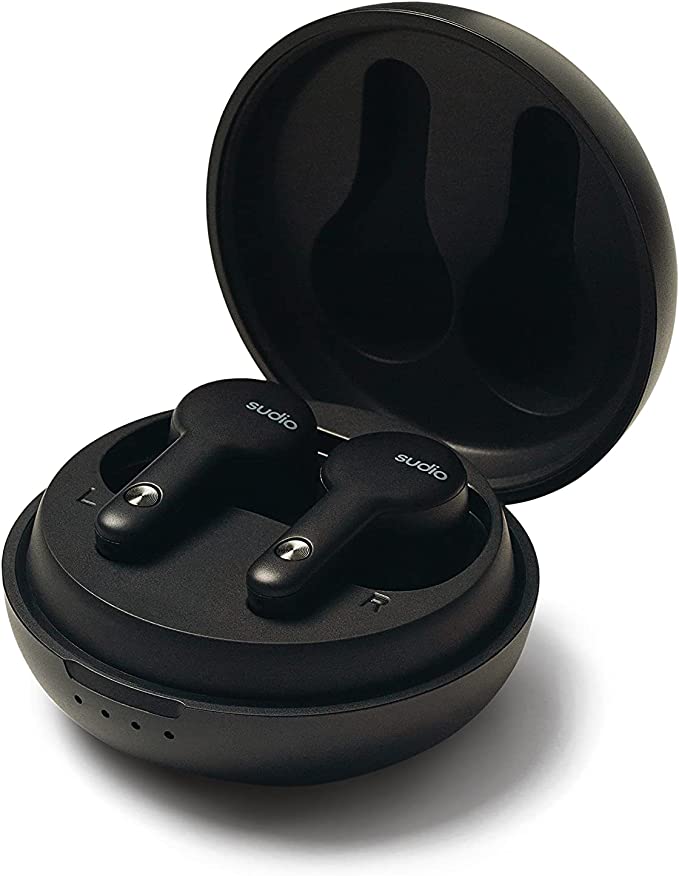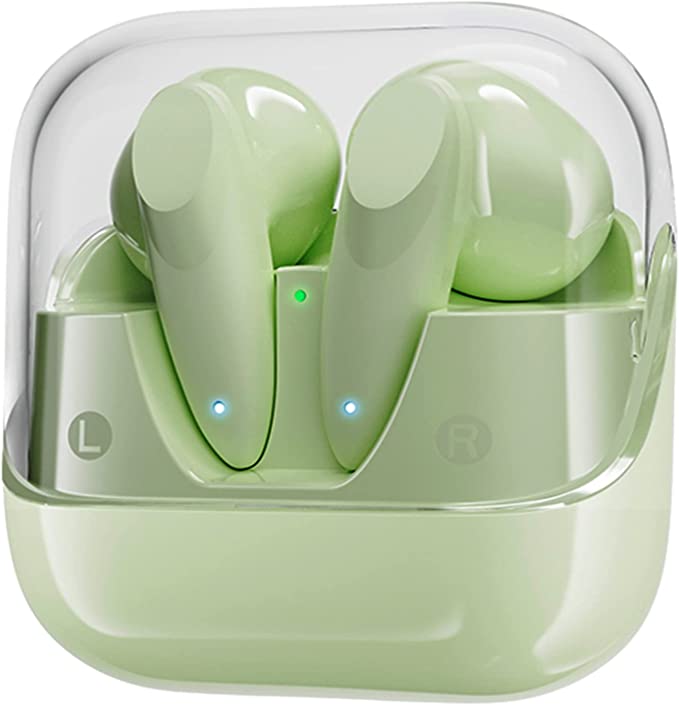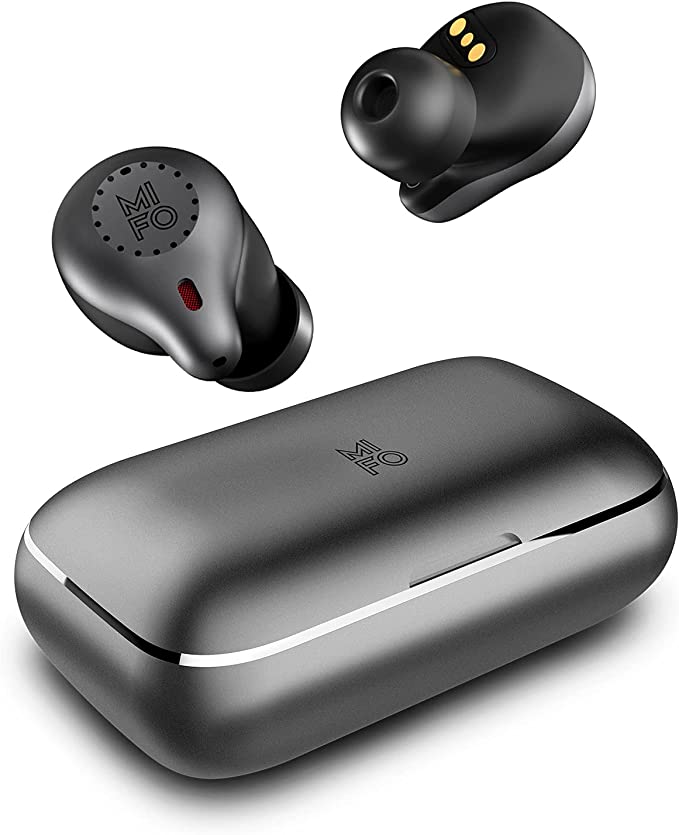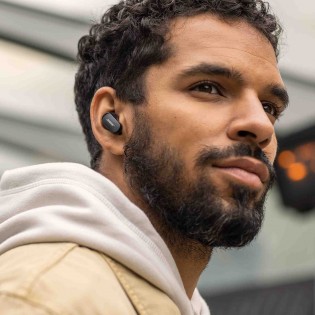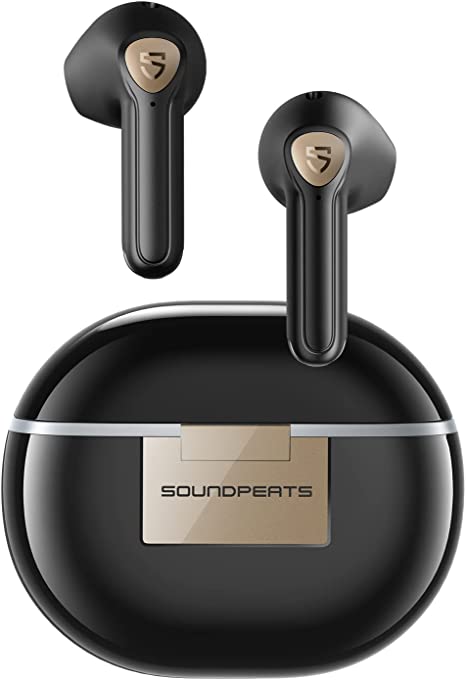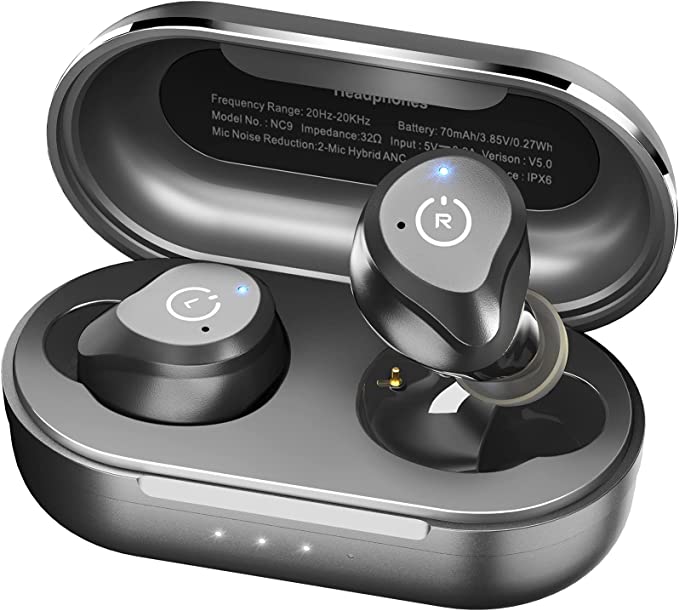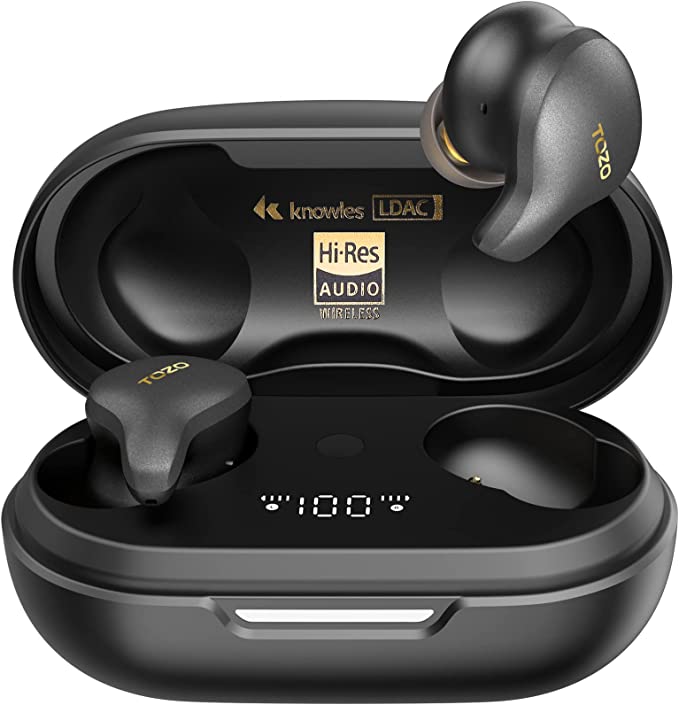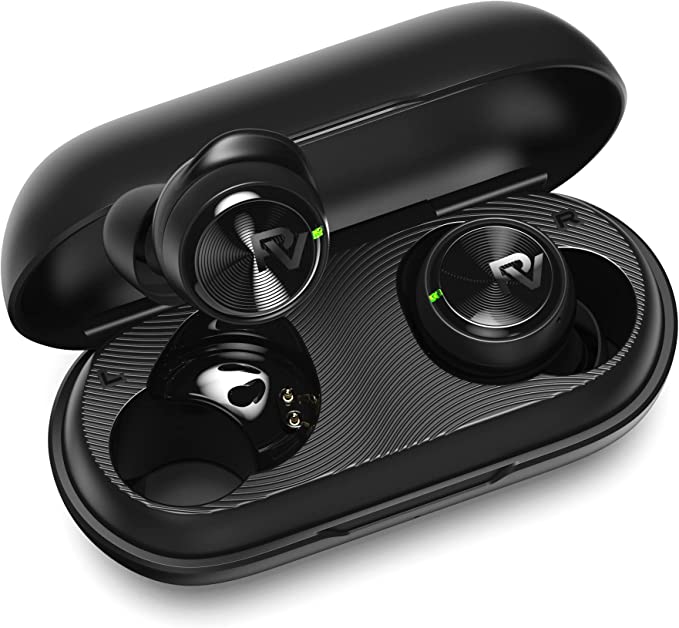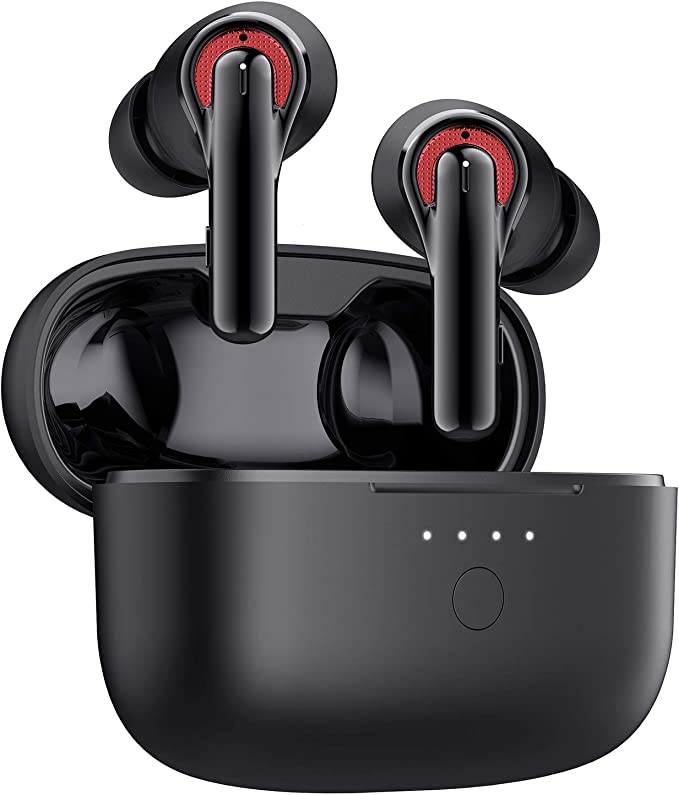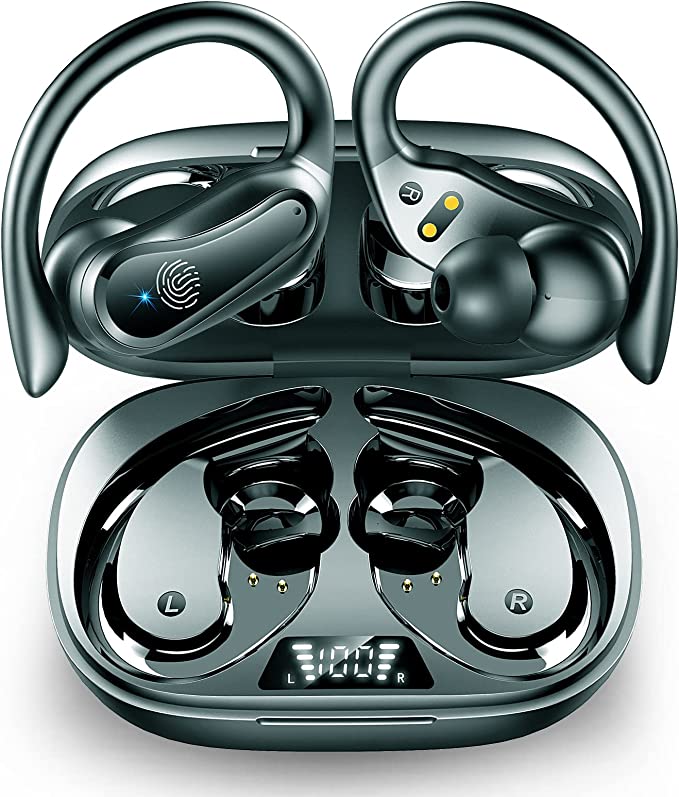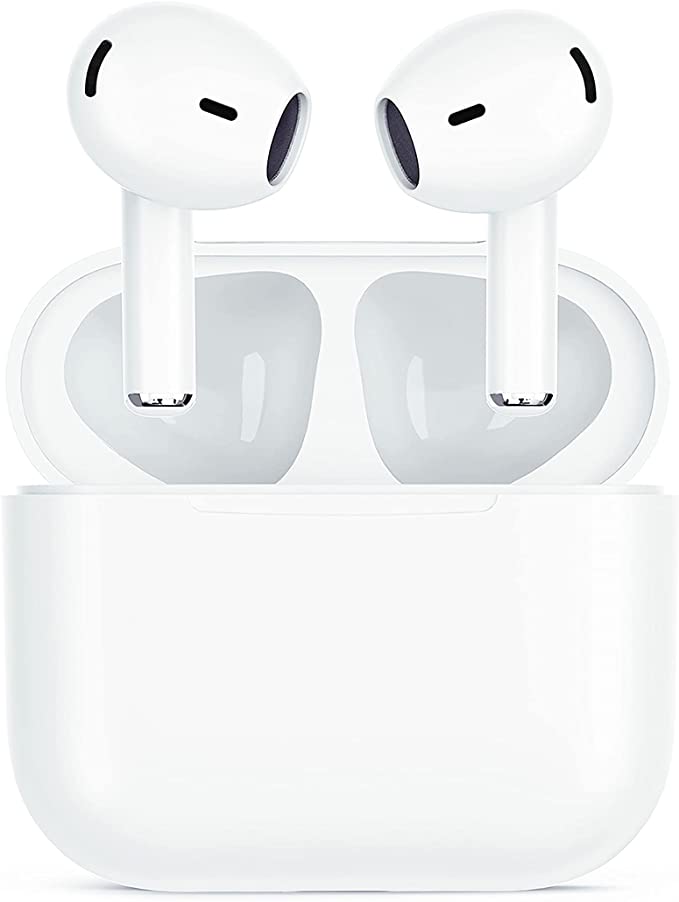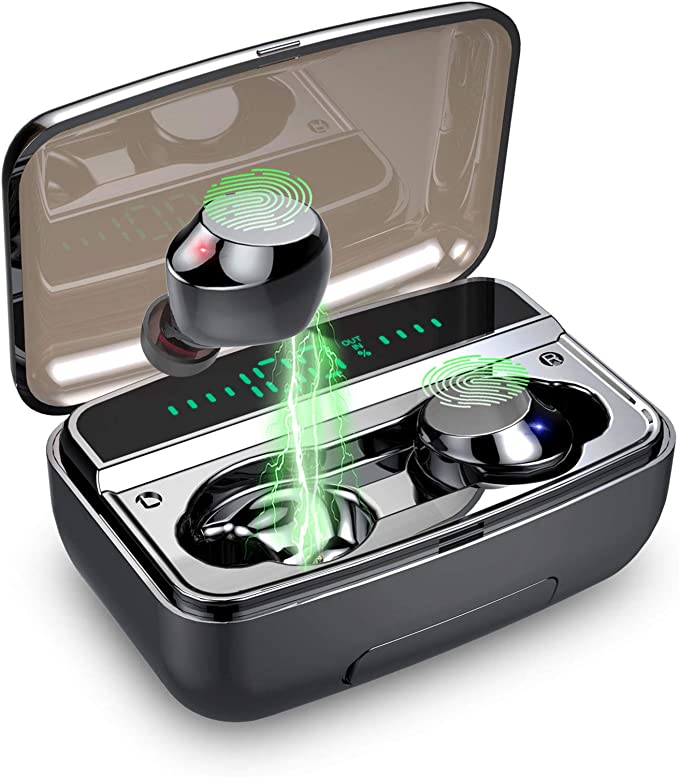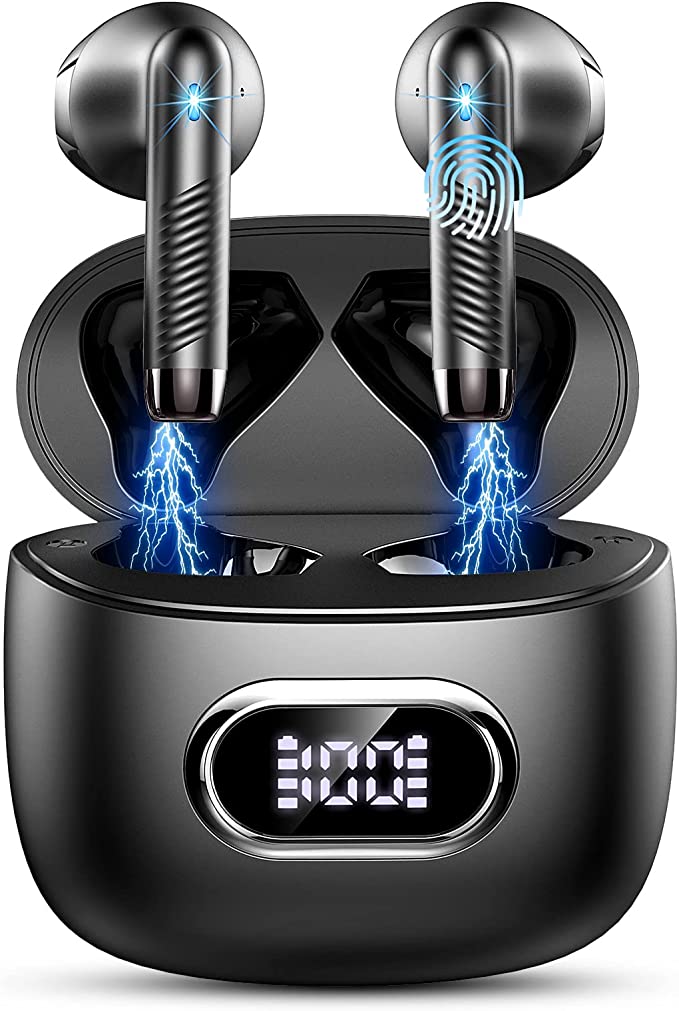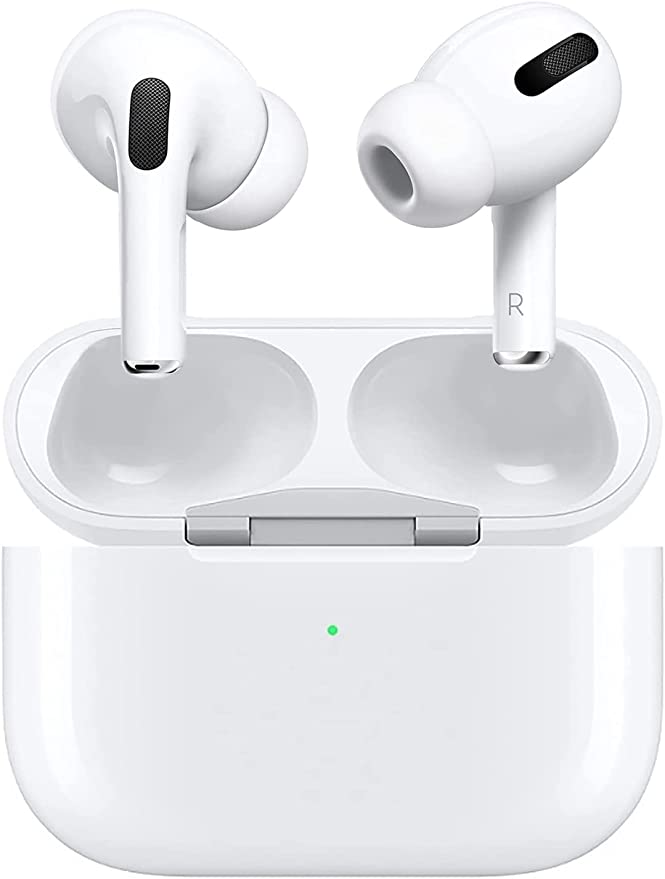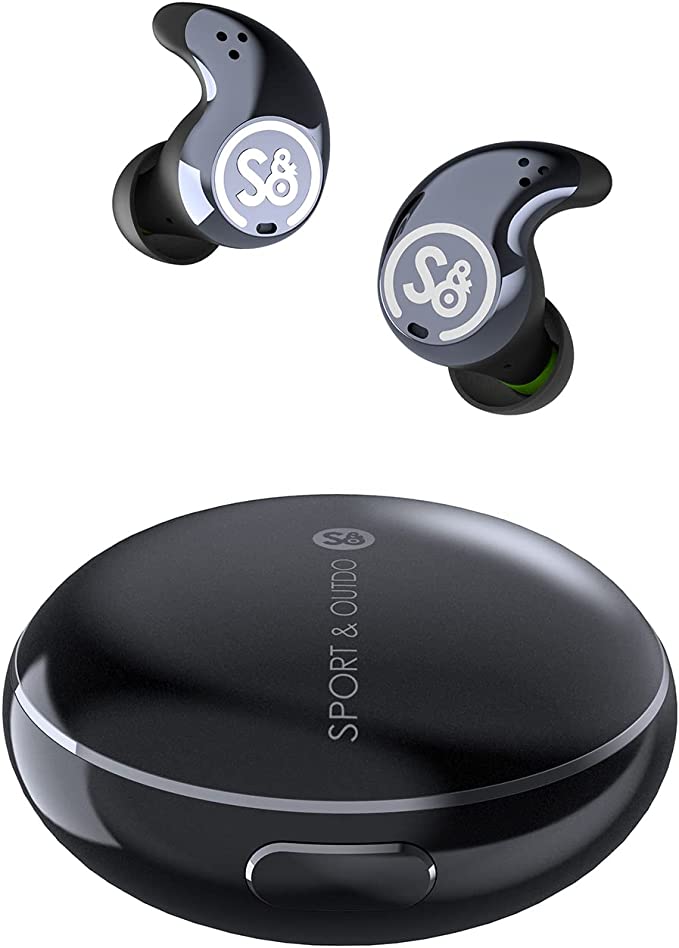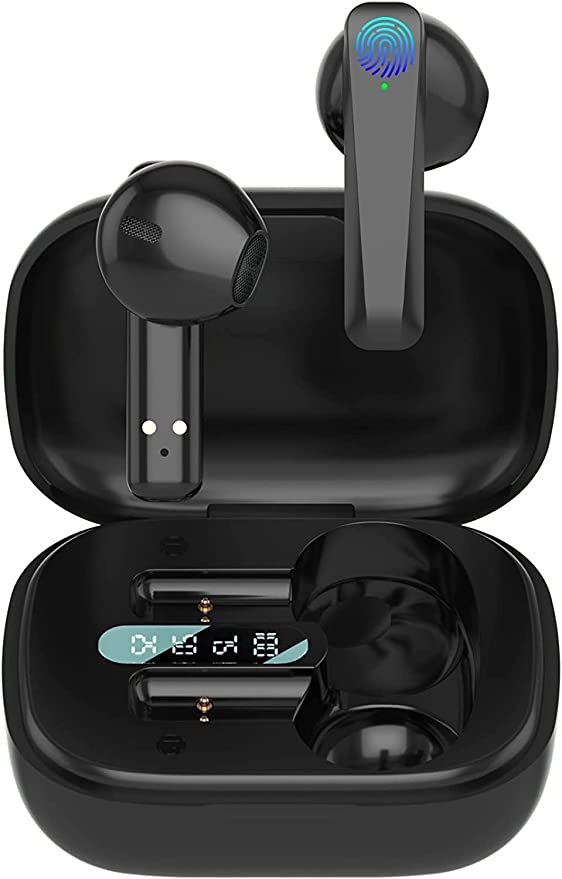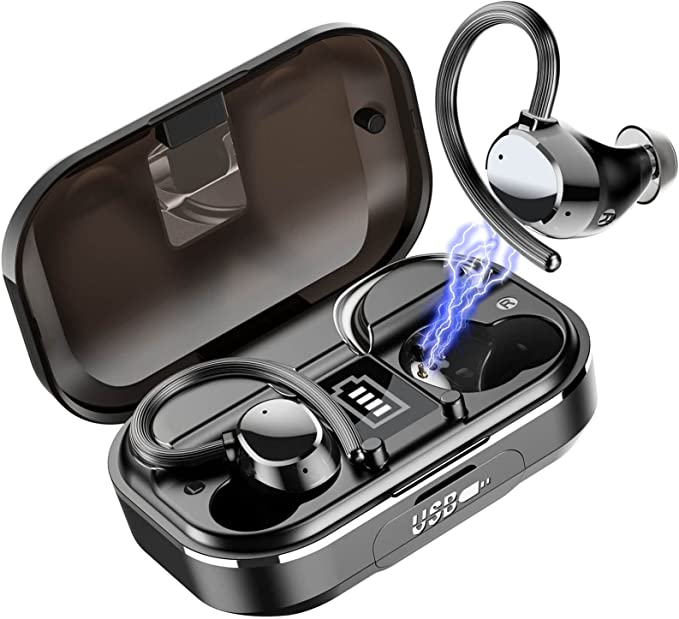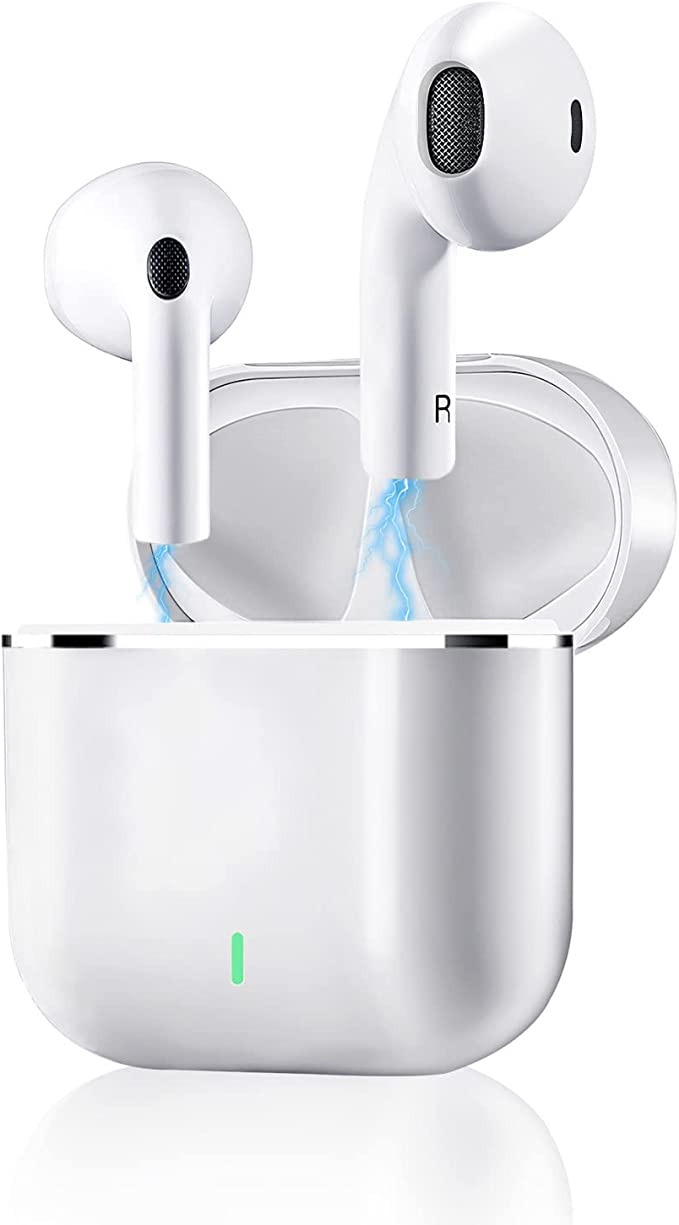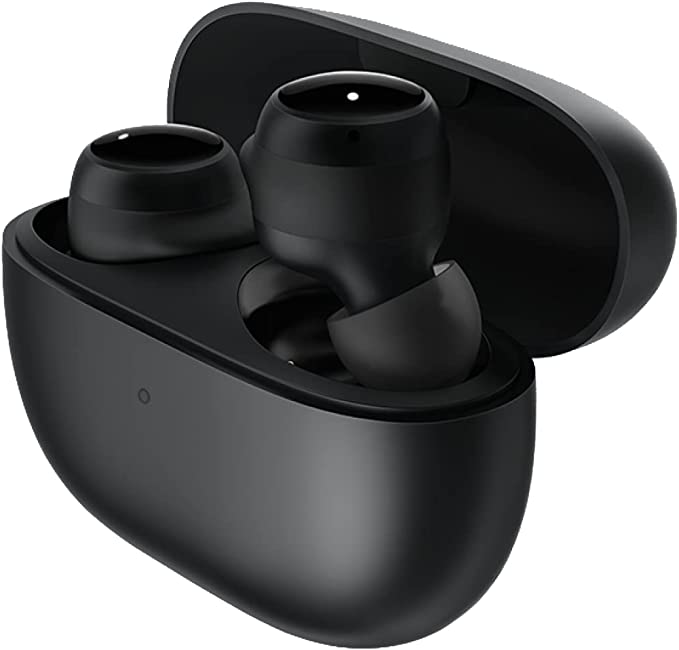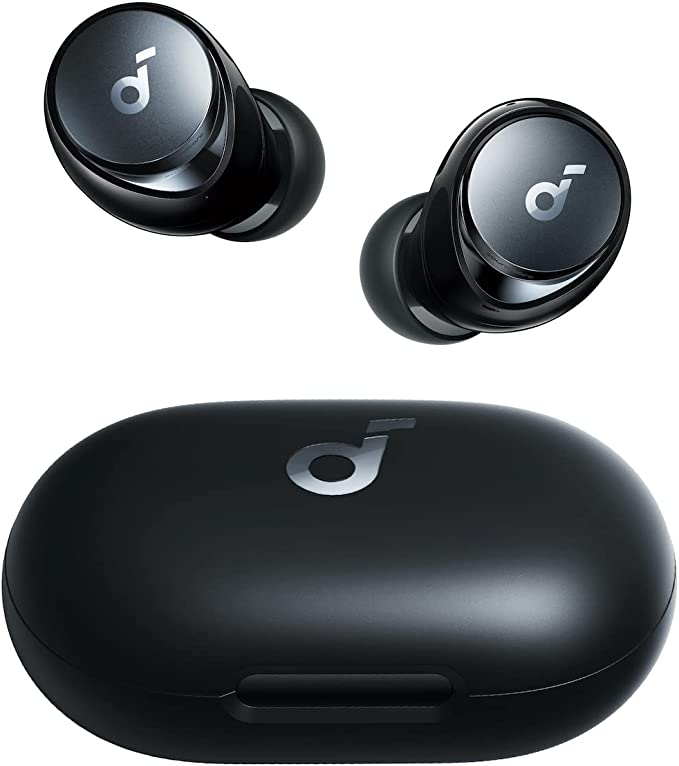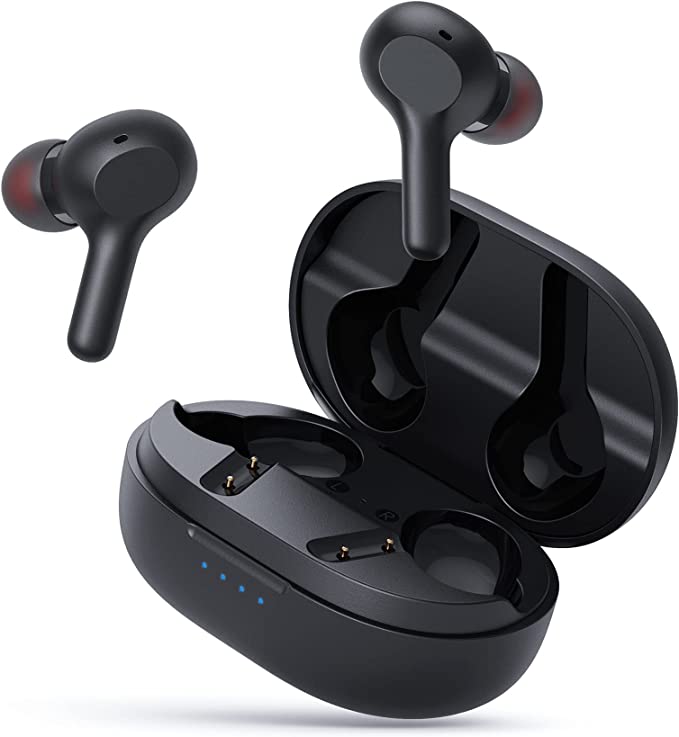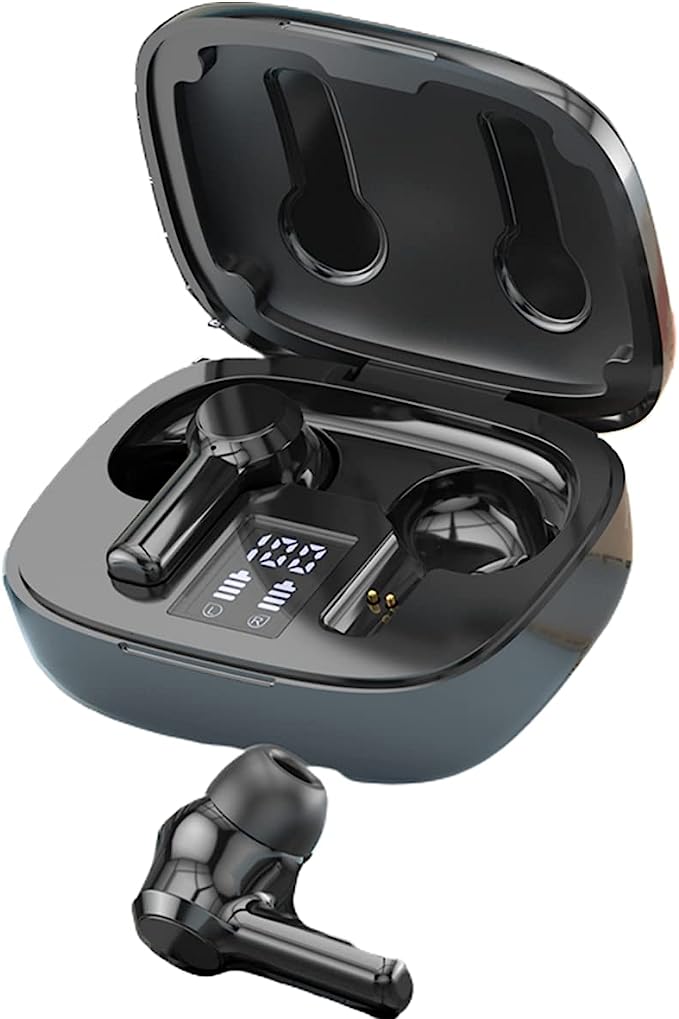PALOVUE iSound-X True Wireless Earbuds: Crystal-Clear Calls and Immersive Sound with Bluetooth 5.2
Update on March 20, 2025, 10:08 a.m.
From the crackling gramophones of the early 20th century to the sleek, wireless earbuds of today, our quest for convenient, high-quality audio has been a long and winding journey. The invention of headphones themselves was a significant leap, offering a personal listening experience that was previously unimaginable. But those early headphones were tethered – literally – to the audio source, limiting movement and creating a tangle of wires.
The dream of untethered sound began to take shape with the advent of wireless technologies like FM radio, but it was the development of Bluetooth in the late 1990s that truly revolutionized personal audio. Bluetooth, named after a 10th-century Danish king, Harald Bluetooth, who united warring tribes, was designed to do something similar: unite different devices through a common wireless standard. The first Bluetooth headsets appeared in the early 2000s, and while they were bulky and offered limited audio quality, they represented a major step towards the wireless future we now enjoy.

The Challenge of Wireless Audio: Beyond the Hype
Transmitting audio wirelessly presents a unique set of challenges. Unlike wired connections, which provide a direct and stable pathway for electrical signals, wireless transmission relies on radio waves. These waves are susceptible to interference from other electronic devices, physical obstructions (like walls and even your own body), and even atmospheric conditions.
Think of it like trying to have a conversation in a crowded room. The more people talking at once (interference), the harder it is to hear the person you’re trying to communicate with. Similarly, the further away you are from the person (distance), or the more obstacles between you (obstructions), the weaker the signal becomes.
This interference and signal degradation can manifest in several ways:
- Dropouts: Brief interruptions in the audio stream.
- Latency: A delay between the audio source and the sound you hear. This is particularly noticeable when watching videos or playing games.
- Reduced Audio Quality: Compression and data loss can result in a less detailed and dynamic sound.
- Shorter Battery Life: The constant effort to maintain a stable connection in challenging environments drains battery power.
Overcoming these challenges requires sophisticated engineering, involving advanced Bluetooth protocols, powerful chipsets, clever antenna designs, and efficient power management.
Decoding the Alphabet Soup: Bluetooth, aptX, and More
Let’s break down some of the key technologies that make wireless audio possible, and specifically, how they are implemented in the PALOVUE iSound-X.

-
Bluetooth: The Foundation: Bluetooth is a short-range wireless technology that allows devices to communicate with each other. It operates in the 2.4 GHz frequency band, which is also used by Wi-Fi and other devices. The core principle of Bluetooth is to establish a secure, low-power connection between two devices, allowing them to exchange data – in this case, audio data.
-
Bluetooth 5.2: What’s New? The PALOVUE iSound-X boasts Bluetooth 5.2, the latest iteration of this technology. Compared to earlier versions, Bluetooth 5.2 offers several significant improvements:
- Enhanced Connection Stability: Bluetooth 5.2 uses a feature called “Connection Subrating,” which allows devices to quickly switch between different connection speeds. This helps maintain a stable connection even in environments with high interference.
- Lower Latency: Bluetooth 5.2 introduces improvements that reduce the delay between the audio source and the earbuds. This is crucial for applications like gaming and video conferencing, where even a small lag can be disruptive.
- Improved Power Efficiency: Bluetooth 5.2 incorporates features that reduce power consumption, extending battery life. This is achieved through more efficient data transmission and improved connection management.
-
Audio Codecs: The Key to Sound Quality: Simply transmitting audio data wirelessly isn’t enough. The data needs to be compressed before transmission and then decompressed at the receiving end. This process is handled by audio codecs. Think of a codec like a translator, converting the original audio signal into a format suitable for wireless transmission and then back again. Different codecs use different compression algorithms, resulting in varying levels of audio quality and latency.
- SBC (Subband Coding): The standard, mandatory Bluetooth codec. It’s relatively simple and widely supported, but its audio quality is considered basic.
- AAC (Advanced Audio Coding): Commonly used by Apple devices, AAC offers better audio quality than SBC at similar bitrates.
- aptX: Developed by Qualcomm, aptX aims to deliver “CD-like” audio quality over Bluetooth. It uses a more sophisticated compression algorithm than SBC, resulting in lower latency and a wider dynamic range. The PALOVUE iSound-X supports aptX, contributing to its superior sound quality.
- LDAC: A high-resolution codec developed by Sony, capable of transmitting even higher-quality audio than aptX. (The iSound-X does not support LDAC.)
Silence in the City: Noise Cancellation Explained
One of the biggest challenges of using earbuds in noisy environments is, well, the noise. Whether it’s the rumble of a train, the drone of an airplane engine, or the chatter of a crowded cafe, unwanted sounds can interfere with your listening experience. This is where noise cancellation technology comes in.
-
Passive Noise Isolation vs. Active Noise Cancellation: There are two main approaches to reducing unwanted noise: passive and active. Passive noise isolation relies on the physical design of the earbuds to block out sound. This is primarily achieved through a tight seal between the ear tips and your ear canal. Think of it like putting your fingers in your ears – you’re physically obstructing the sound waves. Different ear tip materials (silicone, foam) and sizes can affect the level of passive isolation. While the PALOVUE iSound-X does not have Active Noise Cancellation(ANC), its in-ear design and choice of ear tips do contribute to a degree of passive noise isolation.
-
The Magic of Microphones: CVC 8.0 and Beamforming: While the iSound-X doesn’t have ANC for listening, it does employ sophisticated noise cancellation technology for calls. This is where Qualcomm’s Clear Voice Capture (CVC) 8.0 technology comes into play, coupled with a four-microphone array.
Here’s how it works:
- Multiple Microphones: The iSound-X uses four microphones. These microphones aren’t just listening to your voice; they’re also listening to the surrounding environment.
- Beamforming: This is a signal processing technique that uses the multiple microphones to focus on the sound coming from a specific direction – in this case, your mouth. By comparing the signals received by each microphone, the system can determine the direction of the sound source and amplify it, while suppressing sounds coming from other directions. It’s like having a directional microphone that follows your voice.
- Noise Suppression: CVC 8.0 analyzes the combined audio signals from the microphones and uses sophisticated algorithms to identify and filter out unwanted background noise. This includes sounds like traffic, wind, and other people talking. The algorithm distinguishes between your voice and the noise based on their different characteristics, such as frequency and timing.
- Clear Voice Transmission: By suppressing the background noise and enhancing your voice, CVC 8.0 ensures that the person on the other end of the call hears you clearly, even if you’re in a noisy environment. It is important to note that CVC 8.0 specifically targets noise reduction during calls.
The key difference between CVC and ANC is that CVC focuses on improving the clarity of your voice for the person you’re talking to, while ANC aims to reduce the ambient noise that you hear.
Inside the PALOVUE iSound-X: A Technological Tour
Now, let’s take a closer look at the specific components and features that make the PALOVUE iSound-X tick.
- The Qualcomm QCC3040 Chip: The Brains of the Operation: As mentioned earlier, the QCC3040 is a low-power Bluetooth audio System-on-a-Chip (SoC) from Qualcomm. This single chip integrates a Bluetooth radio, a digital signal processor (DSP), an audio codec, and power management circuitry. The DSP is particularly important, as it handles tasks like audio decoding, equalization, and noise cancellation processing. The QCC3040’s low-power design is a major contributor to the iSound-X’s extended battery life.

-
24 Hours of Sound: Battery Life and Charging: The iSound-X earbuds offer up to 4 hours of playtime on a single charge. The included charging case provides an additional 20 hours of power, for a total of 24 hours. This is achieved through a combination of the efficient QCC3040 chip and the lithium-polymer batteries used in both the earbuds and the case. The case charges via a USB-C port, which is the current standard for fast and convenient charging.
-
Built to Last: IPX5 Water Resistance: The IPX5 rating means that the iSound-X earbuds are resistant to sweat and light rain. The “IP” stands for “Ingress Protection,” and the “X” indicates that the device has not been tested for dust protection. The “5” signifies protection against water jets from any direction. This doesn’t mean you can submerge them in water (that would require a higher rating, like IPX7 or IPX8), but it does mean you don’t have to worry about sweat damaging them during a workout or getting caught in a light drizzle.
 * Intuitive Control: Touch Gestures and App Integration: The iSound-X earbuds feature touch-sensitive controls on the outer surface. These controls allow you to manage music playback (play/pause, skip tracks), answer and end calls, and activate your phone’s voice assistant (like Siri or Google Assistant) without having to reach for your phone. Furthermore, the PALOVUE app provides additional customization options, allowing you to adjust the equalizer settings to fine-tune the sound to your preferences, and even customize the functions of the touch controls.
* Intuitive Control: Touch Gestures and App Integration: The iSound-X earbuds feature touch-sensitive controls on the outer surface. These controls allow you to manage music playback (play/pause, skip tracks), answer and end calls, and activate your phone’s voice assistant (like Siri or Google Assistant) without having to reach for your phone. Furthermore, the PALOVUE app provides additional customization options, allowing you to adjust the equalizer settings to fine-tune the sound to your preferences, and even customize the functions of the touch controls.
Beyond the Specs: The User Experience
Technical specifications are important, but they don’t tell the whole story. How do these features translate into real-world benefits for the user?
-
The Commute Companion: Noise Cancellation on the Go: Imagine you’re on a crowded bus or train. The iSound-X’s combination of passive noise isolation (from the snug fit of the ear tips) and CVC 8.0 call noise cancellation (when making calls) helps you tune out the distractions and focus on your music, podcast, or conversation.
-
The Workout Warrior: Sweatproof and Secure Fit: Whether you’re hitting the gym or going for a run, the IPX5 water resistance ensures that sweat won’t damage the earbuds. The secure in-ear fit keeps them in place, even during intense activity.
-
The Conference Call King (or Queen): Crystal-Clear Voice Calls: In today’s work-from-home world, clear communication is essential. The iSound-X’s four microphones and CVC 8.0 technology ensure that your voice is heard clearly during conference calls, even if you’re working from a noisy environment like a coffee shop or a home with kids playing in the background.
-
The Audiophile’s Choice: Immersive Listening: The support for the aptX audio codec means you can enjoy higher-quality audio than with standard Bluetooth earbuds. You’ll hear more detail and nuance in your music, making for a more immersive listening experience.
The Future of Wireless Audio: What’s Next?
The world of wireless audio is constantly evolving. Here are some of the trends we can expect to see in the coming years:
- Even Lower Latency: Further reductions in latency will be crucial for applications like gaming and augmented reality.
- More Sophisticated Noise Cancellation: Expect to see more advanced ANC systems that can adapt to different environments and even personalize the noise cancellation experience.
- Spatial Audio: This technology creates a more immersive, three-dimensional soundstage, making it feel like you’re surrounded by sound.
- Personalized Audio: Earbuds will be able to tailor the sound to your individual hearing profile, compensating for any hearing loss or sensitivity.
- Health and Wellness Features: Expect to see earbuds that can monitor your heart rate, track your workouts, and even provide real-time feedback on your posture.
- AI Integration: Artificial intelligence will play an increasingly important role in features like noise cancellation, voice assistant interaction, and even real-time language translation.

Choosing the Right Wireless Earbuds: A Guide
The best wireless earbuds for you will depend on your individual needs and preferences. Here are some key factors to consider:
- Sound Quality: Do you prioritize high-fidelity audio? Look for earbuds that support high-quality codecs like aptX or LDAC.
- Noise Cancellation: Do you need to block out distractions in noisy environments? Consider earbuds with active noise cancellation (ANC).
- Battery Life: How long do you need your earbuds to last on a single charge?
- Comfort and Fit: Do you prefer in-ear, on-ear, or over-ear headphones? Make sure the earbuds fit securely and comfortably.
- Water Resistance: Do you need earbuds that can withstand sweat or rain? Check the IP rating.
- Price: Set a budget and look for earbuds that offer the best value for your money.
- Additional Features: Consider features like touch controls, voice assistant support, and app integration.
